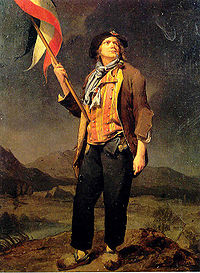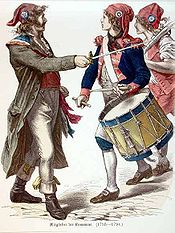
|
Recently, a discovery has been made: Some fragments of
the long-lost compositions of the late-eigteenth century German composer
Otto Linienmacher
were found in the central library of Bad Hohensang
(Rheinland).
Since the big fire of Bad Hohensang in 1794 (during the counterattacks
of the French' army against the so-called First Coaliton, see for instance
here) it was
generally believed that all compostions of Linienmacher, who lived most
of his life in Bad Hohensang, had been lost: none of his works ever appeared
in print during his lifetime, so the handwritten scores were up to 1794
the only source, and they were all lost in the fire (which by the way took
place two years after the death of Linienmacher).
The discovered fragments are probably not in the handwriting of Linienmacher
himself, as everything in this handwritten music points in the direction
of somebody left-handed (and we know for sure Linienmacher was right-handed).
The assumption therefore is that these fragments are parts, copied by somebody
else, from scores by Linienmacher. We have no idea from which scores they
stem, and have no clue as to which voice or instrument they actually represent.
All these copied parts are severely damaged; maybe the damage was caused
by the big fire (which destroyed almost the entire city of Bad Hohensang),
maybe they were damaged at a later time.
Anyway, when we try to sing them we have to do some reconstruction work.
But with our modern knowledge of the style of the Classicists, and our
general insight in sequential techniques, that surely is a task that turns
ot to be not not too difficult.
See below - probably it is handy to use this
pdf. |
 |